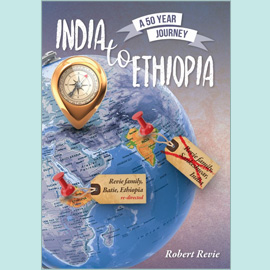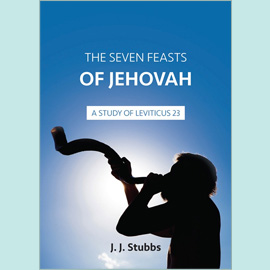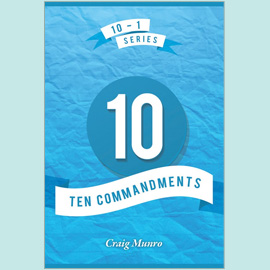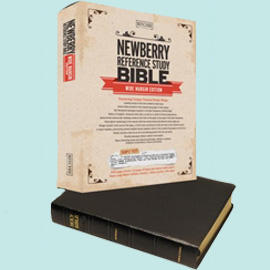Children's hymns
Many hymns which were specially written for children to sing are part of our goodly heritage. Today we still love and appreciate many of them long after childhood has passed. It is more common nowadays to sing shorter songs and choruses in children's meetings and Sunday Schools, and some of them are beautiful and Scriptural, but classic hymns like Jesus loves me, this I know (Anna Warner), Jesus bids us shine...(Susan Warner), and When He cometh...(W C Cushing) can hardly be forgotten. In fact they are as loved as ever, as well as the more seasonal one, Away in a manger...
Another one with lasting appeal is There's a Friend for little children...and it too contains real Scriptural truth. It was written in 1859, the year of the great revival, by Albert Midlane in the Isle of Wight. This servant of the Lord has given us a great variety of hymns, around 1,000 in total. Like Horatius Bonar (see BM, Nov, 2014) he had a passion for Sunday School work, and so both of their large collections contain many children's hymns, whilst others are appropriate in any evangelical setting. Yet others of Midlane's are more devotional, and all are deeply spiritual and Scriptural. Hymns of Light and Love contains around eighteen of them, all but two in its "Gospel Section", whilst The Believer's Hymnbook has included three. These are:
Lord Jesus Thine...
Revive Thy work O Lord...
Without a cloud between...
Midlane's early years
Albert Midlane was born at Newport, Isle of Wight on 23rd January, 1825, just 3 months after his father died. His mother was a godly woman who constantly brought her cares and desires before the Lord in prayer. Her influence, together with that of his sister and his Sunday School teacher brought to him conviction of sin and a desire for salvation. That teacher noticed his aptitudes and encouraged him to write little rhymes when he was quite young. His first hymn to be printed was penned when he was 17 (it was God Bless our Sunday School to the tune of The National Anthem!), and his last was on his 84th birthday!
It was at a Sunday School teachers' prayer meeting that he was saved, and he was baptized at Castlehold Baptist Church, Newport. When he was 23, he left the Baptist Church and began to meet with an assembly of believers in Newport where he found scope to serve the Lord, including the pursuit of his life-long passion and interest in Sunday School work. He married Miriam Grainger, daughter of James Grainger of Newport, on 20th March, 1851, and they had two sons and one daughter.
He began his working life as an apprentice in a printing company, then after three years joined an ironmonger's business. He soon came to have his own hardware business which prospered for fifty years in the town. With his family he lived in Forest Villa, not very far from his shop and the Gospel Hall where he laboured for the Lord. However, near the end of his working life, largely due to his generosity and kindness to others, and through becoming a guarantor for a friend's debts, he ran into severe financial difficulties. When many of his loyal friends heard of this they came to his rescue and a sum of money was obtained to enable him to pay all his creditors, and his bankruptcy was annulled. What was left provided him with an annuity and he was able to retire free from financial worries. Unlike many authors, he never took out a copyright for any of his hymns, and never benefitted financially from them.
Hymns and hymnbooks
He compiled two hymn-books for young people, The Jewish Children's Hymn Book and The Bright Blue Sky Hymn Book, the latter containing 323 hymns of his own composition. In addition to Sunday School work, he often preached the gospel, and in this connection he compiled two Gospel Hymn Books: The Gospel Echoes Hymn Book, and The Gospel Hall Hymn Book with 278 hymns of his own - this one compiled when he was 80 years old. Many were written in 1860 and 1861, "during walks around the ancient and historic ruins of Carisbrook Castle, in the twilight hour so dear to thought" he wrote. The Poet Laureate, Lord Tennyson, lived only 11 miles away from him on the western side of the island, and encouraged him in his literary efforts.
On 7th February, 1859, after a hard day's work in his shop, Albert Midlane sat down to write something which had been going through his mind during the busy day. With his family gone to bed, he sat up into the night and wrote his best known hymn:
There's a Friend for little children Above the bright blue sky...
It was 2am before he completed it. Exhausted, he laid his head on the page and when his wife came downstairs to look for him she found him semi-conscious. She was able to revive him, but she firmly put an end to his late night efforts in the future! In defence he smiled and said, "But the hymn was completed!".
He gave the hymn its title, Above the Bright Blue Sky, and saw it first published as the last article in the 1859 edition of Good News for the Young, a paper for children edited by C H Mackintosh. It quickly became very popular and has since found its way into over 200 hymn-books, and has been translated into more than 50 different languages. The tune In Memoriam to which it is usually sung, was composed by Sir John Stainer at the request of the musical committee of Hymns Ancient and Modern and was named in memory of the composer's little son Fred who had died not long before.
A Jubilee event
Above the Bright Blue Sky had the unique distinction of a Jubilee celebration. On 7th February, 1909, the Sunday School Union arranged for its fiftieth anniversary to be commemorated in churches and Sunday Schools throughout the English-speaking world. The hymn was given special prominence in services and Sunday School lessons that day and it was also the subject of many sermons. A special souvenir edition was printed, along with Stainer's tune and a brief biography of the hymn-writer. He had the great pleasure of hearing 3,000 children singing it that day in St Paul's Cathedral, and again many young voices sang it in his native Newport, when he preached for the last time, earnestly speaking of eternal things to the crowds of old and young who had assembled to honour him again.
His gift as a hymn-writer brought him to the attention of many eminent people besides Lord Tennyson. Queen Victoria accepted several volumes of his compositions, and the Prince Consort bought some for circulation among his friends.
The Mr and Mrs Midlane celebrated their golden wedding on 20th March, 1901. He lived eight years after this, but on the morning of 11th February, 1909 he fell ill. Then on 28th February just at daybreak on the Lord's Day, he quietly passed away in his sleep to be with Christ, "Above the bright blue sky". At his funeral in Carisbrooke Cemetery yet again many children's voices joined to sing There's a Friend for little children, along with a large company singing another two of his hymns, Star of the morning, rise! and One lasting, long Amen.
Some of the last lines he wrote were –
What is the world to one whose hopes
Are fixed beyond the skies?
What can impede the charioteer
Just near to grasp the prize?
Enough! One's cup is brimming full,
All earthly struggles o'er;
Beneath the shadow of His wings,
In bliss for evermore.
To be continued.









